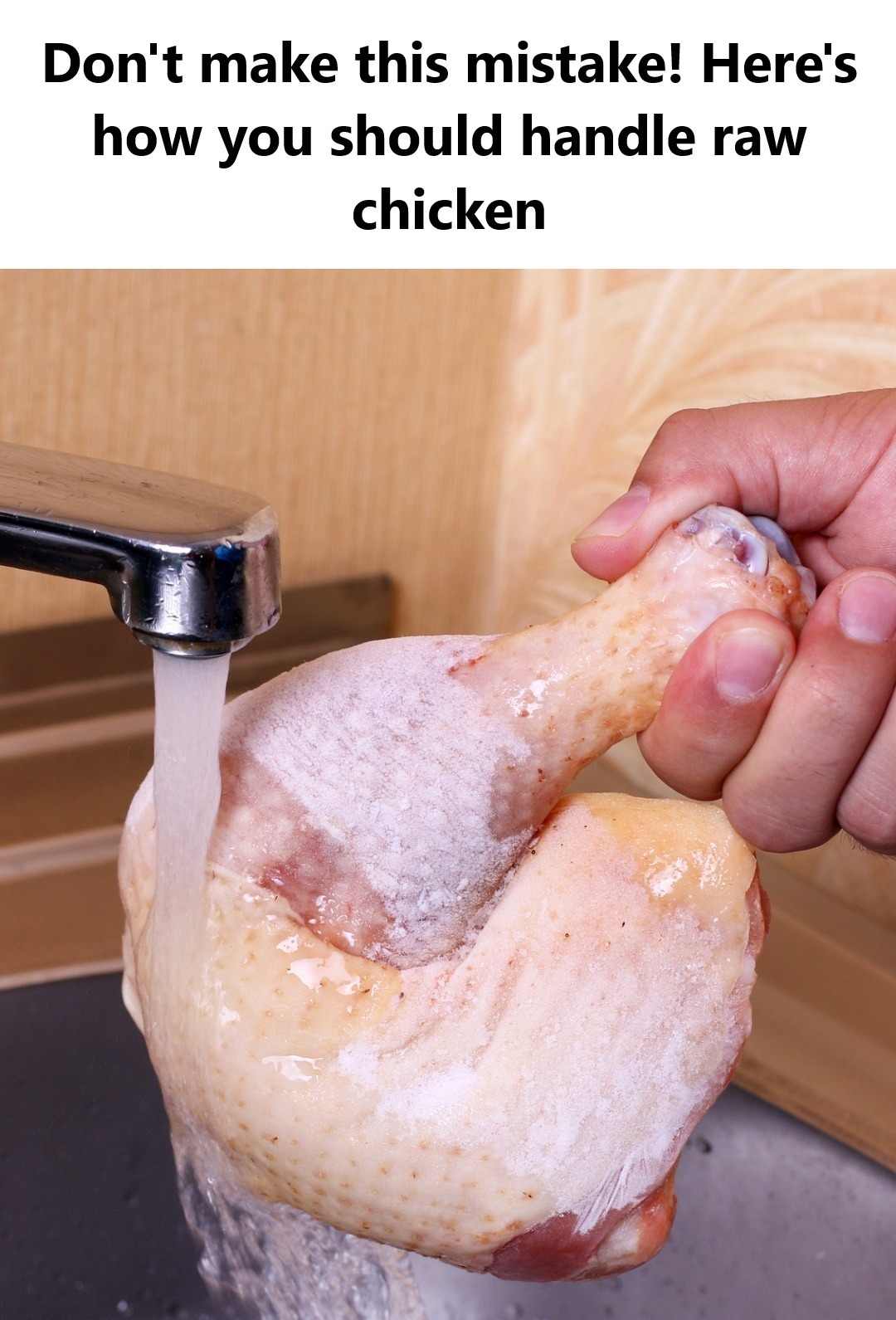ADVERTISEMENT
Sanitize your sink after rinsing chicken to prevent bacteria from lingering.
3. Store Chicken Safely
Make sure that when you store raw chicken, it’s placed in a sealed container or wrapped tightly to avoid any potential drips or leaks that could contaminate other foods in your fridge. Store raw chicken at the bottom of the fridge to prevent juices from contaminating other items.
4. Thaw Chicken Safely
If you’re thawing frozen chicken, avoid leaving it at room temperature. Instead, use one of these safe methods:
- In the refrigerator (most recommended)
- In a sealed plastic bag in cold water
- In the microwave if you plan to cook it immediately
Thawing chicken at room temperature can allow bacteria to multiply rapidly, increasing the risk of foodborne illness.
🌡️ Key Takeaways: How to Handle Chicken Safely
To summarize, here are the key points to remember when preparing raw chicken:
- Do not wash raw chicken. Washing only spreads bacteria around your kitchen, increasing the risk of cross-contamination.
- Cook chicken thoroughly to kill harmful bacteria. Use a meat thermometer to ensure it reaches an internal temperature of 165°F (74°C).
- Practice good kitchen hygiene by cleaning surfaces, utensils, and hands thoroughly after handling raw chicken.
- Store chicken properly in the fridge and use safe thawing methods to minimize the risk of bacterial growth.
By following these steps, you can enjoy delicious, safe, and perfectly cooked chicken without putting yourself or your family at risk of foodborne illness.
🍽️ Final Thoughts
While washing raw chicken might seem like a helpful habit, it’s actually a practice that could lead to more harm than good. Instead of rinsing your chicken, focus on safe handling, proper cooking techniques, and regular kitchen sanitation to ensure that your meal is both tasty and safe. With these practices, you’ll be able to enjoy perfectly cooked chicken without the risk of contamination or illness.
Got any other kitchen safety tips or concerns you’d like to learn about? Drop them in the comments—we’re always happy to share more helpful cooking advice!
